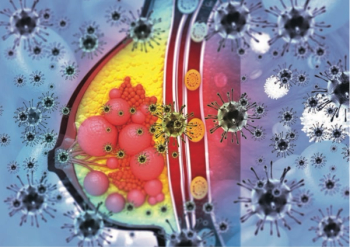
- ONCOLOGY Vol 10 No 4
- Volume 10
- Issue 4
Monoclonal Antibodies to Help Locate and Treat Occult Metastases
Monoclonal antibodies (MoAbs) show promise as a prognostic as well as therapeutic tool in some minimal residual cancers, said Gert Riethmüller, MD, of the University of Munich's Institute for Immunology.
Monoclonal antibodies (MoAbs) show promise as a prognostic aswell as therapeutic tool in some minimal residual cancers, saidGert Riethmüller, MD, of the University of Munich's Institutefor Immunology.
Speaking at a symposium sponsored by the Cancer Research Institute,Dr. Riethmüller reported that an ongoing trial is using MoAbsto detect cytokeratin-positive cells in bone marrow as evidenceof micrometastatic disease in patients with early cancers of thelung, breast, gastrointestinal tract, and urogenital system. Atherapeutic trial with the 17-1A MoAb is also underway.
Secondary Prevention
Acknowledging that primary prevention of cancer is still beyondreach, Dr. Riethmüller characterized the avoidance of metastaticdisease as "secondary prevention," and called it a realisticgoal. He pointed out that the systematic dissemination of tumorcells occurs early in many epithelial tumor types. Thus, the keyto secondary prevention is the identification and treatment ofminimal residual disease before it manifests clinically.
Dr. Riethmüller said that cytokeratin expression is not atumor-specific characteristic; rather, it is ubiquitous in normalepithelial tissues. Nonetheless, the origin and malignant natureof the targeted cells in the bone marrow can be established throughevidence of differentiation antigens and mutated oncogene proteinsexpressed by the tumor cells.
This method has been employed successfully in early cancers ofthe lung, breast, and large bowel, and clinical follow-up studieshave confirmed the prognostic significance of cytokeratin-expressingcells as a marker for occult metastatic disease, he said.
Once identified, these micrometastases can be targeted for immunotherapy.Because the cells are located in the mesenchymal interstitia,they are accessible to IV injection of antibodies and secondaryeffector cells and molecules.
In a randomized prospective trial in which patients with colorectalcancer (Dukes stages C1 and C2) were treated with the 17-1A MoAbwithin 2 weeks of complete resection, the treated group showedan improved 7-year survival over the untreated group, Dr. Riethmüllersaid.
The therapeutic effect was most pronounced on manifestation ofdistant metastases, he said, whereas no effect was seen on localrelapses. Toxic effects were minor, consisting of diarrhea ofshort duration in a few patients.
A new phase I/II trial is planned using chimerized MoABs to reducethe risk of rejection from repeated treatments, Dr. Riethmüllersaid. He noted that ongoing research into other antigen targetsmay make possible a multipronged approach, employing a definedcombination of different antibodies in "preemptive strike"therapy.
Articles in this issue
over 29 years ago
Radiosurgery Plus Sensitizer Tested for Brain Tumorsover 29 years ago
Regular NSAID Use Appears to Reduce Breast Cancer Severityover 29 years ago
Deaths from Melanoma--United States, 1973-1992over 29 years ago
Survivors of Childhood Cancer Face Other Medical Risks As Adultsover 29 years ago
Post-Transplantation Complications of Unrelated Bone Marrowover 29 years ago
Intensified VICE Regimen May Improve SCLC SurvivalNewsletter
Stay up to date on recent advances in the multidisciplinary approach to cancer.

















































































